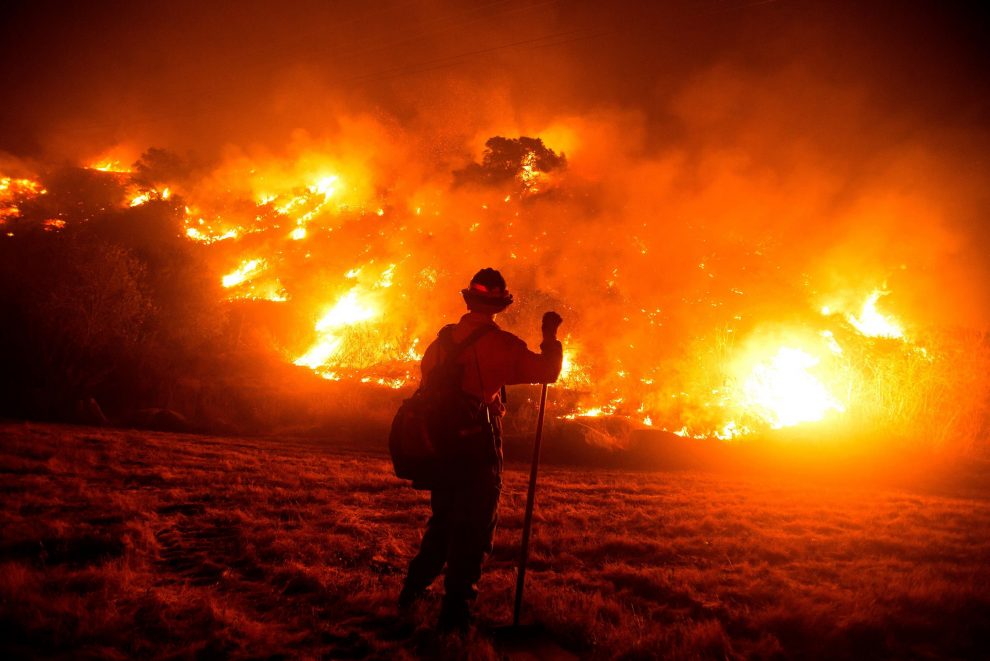In this century, it is not difficult to find the perfect recipe for monstrous wildfires. In order to survive, a fire requires heat, fuel, and oxygen. But what makes California, in the words of bioclimatologist Dr. Williams of Columbia University, “a perfect recipe for fire”?
Of all the California fires starting from 1932, the largest ten all occurred within the past twenty years; five out of those ten occurred in this year alone. Since 2012, California has not gone a single month without a wildfire burning. They can be sparked in many different ways-from power lines falling, lightning striking, and even to igniting smoke-generating fireworks at a gender reveal party!
To no scientist’s surprise, the first major cause is climate change. US Forest Search researcher Alan Ager claims that “climate change is amplifying fire behavior and fire size.” Temperature changes of only two or three degrees Farenheit higher than normal dries out vegetation and makes areas more susceptible to burning. In fact, a heat wave recently hit the state, with Los Angeles County reaching a record of 121 degrees and Death Valley reaching 130. In this increasingly warming climate, ecosystems will only continue to dry out; as a result, fires will continue to grow more fierce and more frequent. Fire season will also drag on. California’s forests face frequent, intense droughts with intense periods of rain. Known as “weather whiplash,” which promotes thick underbrush growth. When the subsequent drought occurs, the underbrush becomes a perfectly susceptible tinder, which again is causing California to be the “perfect recipe for fire”.
“Fans only make flames hotter”; this saying holds true with winds and jet streams to wildfires. A study published by the journal Environmental Letters suggests there are two fire seasons in California. From June to September, fires are driven by warm and dry winds. Each fall, gusts of wind, known as Santa Ana winds, bring in dry air from the Great Basin area into southern California (and in the north, the region faces similar winds known as the Diablo). The other season typically lasts from October to April. The reason why these winds help create wildfires is because winds can make already-dry conditions even worse, making areas more susceptible to fire. Along with drying out vegetation, winds can move embers around which spreads fires. If they are fierce enough, fires can even jump over eight-lane highways due to wind, taking over the landscape.
As sea levels rise, people in California have been encouraged to retreat inland. Because of this, unfortunately, these inland locations that are at high risk for wildfire now have a higher population density. This puts more people in danger, and creates a higher likelihood of fires! People are always creating small sparks, which can lead to monstrous fires. In Dr. Williams’s words, “As the dry season wears on and stuff is drying out more and more, the chance that a spark comes off a person at the wrong time just goes up.”
Now that it is clear why these wildfires occur, what is the effect of them? “Wildfire smoke can affect health almost immediately,” said Dr. Yao. In her study, she found evidence suggesting that within an hour of smoke settling after a wildfire, the number of ambulance calls for asthma, chronic lung disease and cardiac events increased by 10%. When wildfires burn in urban areas, the smoke produced can contain toxic air contaminants, such as hydrogen cyanide, hydrogen chloride, and even metals. Air pollution has been linked with increased risk of respiratory illnesses, including pneumonia and bronchitis. Even residents who live some distance away from fires can be harmed by air pollution in the amounts of carbon monoxide, nitrogen oxides, and other volatile compounds. Smoke itself contains a wide variety of harmful pollutants and chemicals. PM2.5 are tiny particles that can lodge deep within one’s lungs, decreasing lung function, aggravating asthma, and causing heart attacks and strokes. Scientists have also found that intense fires release up to 30% as much mercury as other industrial sources. In this manner, mercury can travel downwind and contaminate watersheds or harm fragile ecosystems. If mercury ends up in waterways, it can change into methylmercury, where it can be found in fish and other seafood (this is an example of biomagnification, where the concentration of toxins increases with higher levels of the food chain; this is also why doctors recommend for pregnant women and children to steer away from fish). Mercury poisoning can lead to impairment in speech, hearing, and walking while also causing muscle weakness and vision impairment. Although they may think so, younger generations are not invincible when it comes to the effects of wildfires. Dr. Prunicki, director of research at Stanford for smoke studies, found that “in teenagers, [their blood was drawn] after a wildfire, [there was] a systematic increase in inflammatory markers,” and many chronic diseases are linked to inflammation.Clearly, the health effects of wildfires are dramatic and devastating.
The wildfires in California are a result of many different factors coming together to create the perfect recipe for wildfires. Climate change, winds, and human activity all are causes that contribute to this environment that is so prone to wildfires. The fires have numerous health effects that are impacting the population of California, and will continue to do so. There are many factors that need to be investigated further for officials to make a concrete plan in combating the wildfires, but it is clear that something needs to be done, and fast.







